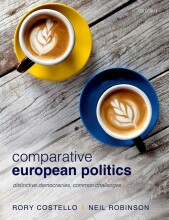Summary: Dutch Politics And Qualitative Methods
- This + 400k other summaries
- A unique study and practice tool
- Never study anything twice again
- Get the grades you hope for
- 100% sure, 100% understanding
Read the summary and the most important questions on Dutch Politics and Qualitative Methods
-
1 Lecture 1
This is a preview. There are 17 more flashcards available for chapter 1
Show more cards here -
What are the two core elements of the development of the Dutch political system?
The linguistic/religious border and the political demarcation -
What is the difference between agencies and structures?
Agencies are actions of people and structures are things as they are. -
How did the Dutch economic structure shape their regeringsvorm?
When other countries becamedictatorships /tyrannies , theNL didn’t, which was because of a wealthy middle class anddecentralization . Thisanti-absolutism became part of the national identity which meant that Dutch people didn’t like the catholic church and the Spanish rulers. -
What is the difference between nomothetic and ideographic?
Nomothetic means that you are interested in something thatcorresponds to a wider set of phenomena.Idiographic is when you are interested in what is unique about that specific case. -
Which cleavages did the three revolutions create in Europe?
The Reformation created the periphery vs centers inside of countries, the French Revolution made the church vs secular state important and the Industrial Revolution created both the worker vs capital owners and agricultural vs industrial interests -
Which political parties/ideologies did these revolutions create?
Reformation created conservatism, French Revolution christian-democratic and liberal parties and the industrial revolution communist, socialist and social-democratic -
What are the two dimensions in which you could tell what someone was going to vote in the NL before 1960 (during pillarization)?
Religious and economic -
What are the two dimensions that are now often used to make sense of the standpoints of parties?
Right-left and progressive-conservative -
What is the definition of within-block-volatility?
The parties in theNL aredividable into 4 blocks; right, left, christian,populist-right . Inside each block there are around 3 or 4 parties. Switching between the parties in the same block iswithin-block -volatility and this happens the most in party switches -
Which are the two types of cleavages that Lijphart describes?
Reinforcing cleavage => if socialcleavages overlap, this canheighten the conflict and makes it more decisive.Cross-cutting cleavage => bridges that form bonds between groups and divides. That means more cooperation, and more options for lesspolarization .
- Higher grades + faster learning
- Never study anything twice
- 100% sure, 100% understanding






























